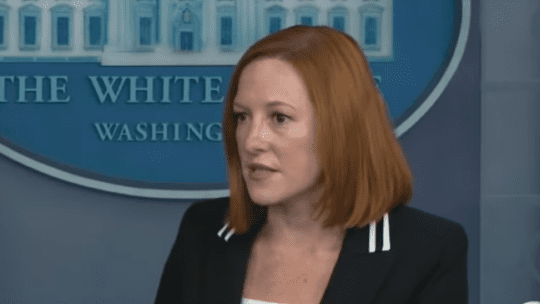
Yesterday (Oct. 31), White House Press Secretary Jen Psaki disclosed that she contracted COVID-19.
In a statement posted to Twitter and published by the Associated Press, Psaki shared the circumstances of her positive COVID test result, as well as the actions she has taken since. The timing and content of Psaki’s disclosure could well become a pandemic-era guide for PR pros should an executive, client or other public-facing figure test positive for COVID-19.
The statement was well-timed, getting ahead of news stories that might question why Psaki was absent from President Biden’s trip to Glasgow for today's (Nov. 1) COP26 Climate Summit.
A notable twist on a classic, Psaki used the phrase “out of an abundance of transparency” to explain her choice to go public with the diagnosis.
Jenny Wang, VP, Clyde Group, supports Psaki’s “having led with transparency.” She cites the move as a best practice for high-level, high-visibility executives.
Gene Grabowski, partner at kglobal, says Psaki’s disclosure provides a solid model for how to share important information. With an eye to Psaki’s statement, Grabowski lays out steps that, he says, government agencies, corporations, nonprofits, universities and other organizations would do well to follow when sharing sensitive information:
- Share the information as early as possible and before it leaks to media. This ensures that audiences will know you are honest and transparent. (Psaki did so, a day before the story broke.)
- Advise what symptoms you have so that everyone understands your condition. This builds a connection with your audience. (Psaki said she was experiencing mild symptoms.)
- Reveal whether you have been vaccinated against COVID-19. This is a vitally important detail. (The AP verified Psaki is “fully vaccinated.”)
- Reveal when you were last in contact with leaders of the institution so your audiences understand what risks may exist for them. The story ultimately is about those you may have infected. (Per AP: “Psaki, 42, said she was last in contact with President Joe Biden on Tuesday, when she met him in the White House, where they were more than 6 feet apart and wearing masks.”)
- Describe what steps you have taken to protect those around you. This demonstrates careful and responsible action. (Psaki quarantined, took PCR tests daily, and cancelled her trip to Europe after learning a family member had contracted COVID-19. In addition, Psaki said she would return to work in-person only after a 10-day quarantine and negative test result.)
- If possible, and if you believe it, share information about how vaccinations, while not 100 percent effective, remain highly effective and can lessen COVID symptoms. This can help reinforce an important national health message and pre-empt most critical attacks against the COVID-19 vaccination process.
Wang adds internal disclosures to Grabowski’s list. “You don't want your employees or colleagues finding out externally for the first time. It's important for high-level execs to disclose internally first if they are going to disclose externally.”
One would hope that Psaki’s White House colleagues were made aware of the situation before press time; in any case, Psaki’s statement makes clear that frequent testing is White House protocol among core staff.
Despite Psaki’s deft handling of the disclosure, it’s possible that the vaccine misinformation narrative on social media will get a boost from the news. Wang agrees with Grabowski that external statements like Psaki’s are “great opportunities to reiterate trust in science, trust in vaccines and how they greatly reduce serious illness.”
If, however, the anti-vaccine contingent comes after Psaki, Wang would advise her to “lead with science and stats.”
Sophie Maerowitz is senior content manager at PRNEWS. Follow her @SophieMaerowitz.
